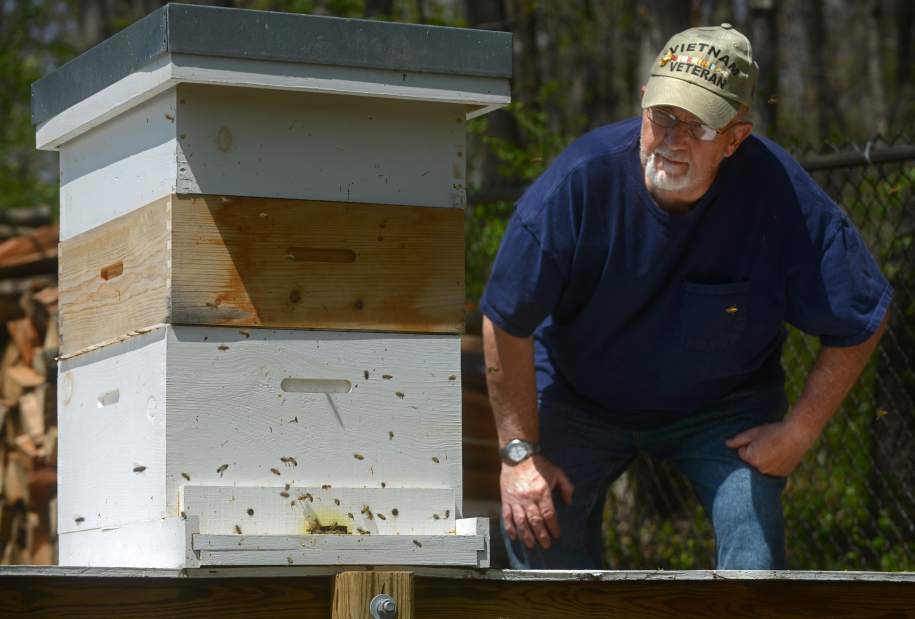Harsh weather aggravates bee colony die-off
The country's largest honey bee colony survey reports a continued trend of devastation with a 23 percent loss for managed colonies in the winter of 2013-14.
Another study by the Pennsylvania State Beekeepers Association found a 41 percent colony loss in its preliminary findings of a survey for last winter.
The consensus among beekeepers statewide is that the harsh winter boosted the die-off, which typically runs 20 percent.
Nationally, the average loss over the eight years of the survey is almost 30 percent, according to the study sponsored by the Apiary Inspectors of America and the United States Department of Agriculture.
For the 2013-14 winter season, nearly 7,200 U.S. beekeepers responded, who manage almost 22 percent of the country's 2.6 million colonies.
The study also found that colonies were not just dying in the winter but in the summer months, too.
Although this year's national loss numbers are less than the average, “we are still losing on average 30 percent of our colonies annually, and that is still astonishing,” said Dennis vanEngelsdorp, an assistant professor of entomology at the University of Maryland and the director of the Bee Informed Partnership. He is also a former apiarist for the state of Pennsylvania.
No single cause found
There is no single cause of the continual honey bee deaths, according to the study.
However, beekeepers that control their hives for the parasite varroa mite have much lower losses, according to vanEngelsdorp.
“We're really worried about the commercial beekeeper and if they can sustain these losses year after year,” he said. “If they don't, it will have a knockdown effect on farmers who rely on them, affecting blueberries, cranberries, apple production in Pennsylvania, melon production on the Eastern shores and almonds in California.”
According to Charlie Vorisek, president of the Pennsylvania State Beekeeper Association, fewer bees means less pollination of cherry and apple orchards and crops that feed dairy cows.
As a result of the die-offs, he expects higher prices for fruits, vegetables and almonds in local markets.
VanEngelsdorp said, “If we want to produce our own fruit and vegetables in this country — one in three bites we eat are pollinated by honeybees — we have to make sure we have healthy bees.”
To fortify the commercial bee industry, he recommends: Increasing clean forage areas for a healthy diet for the bees; coming up with better management techniques to battle the varroa mite; and examining how pesticides are evaluated for impact on bees.
Locally, residents can make a difference, according to vanEngelsdorp.
To boost the local honey bee population, residents should consider taking up beekeeping for a hobby. Consumers should buy local honey to support local beekeepers. And property owners should consider devoting 10 percent of their land to plants that bloom at different times of the year without the use of pesticides.
Mary Ann Thomas is a staff writer for Trib Total Media. She can be reached at 724-226-4691 or mthomas@tribweb.com. Associated Press contributed to this report.

